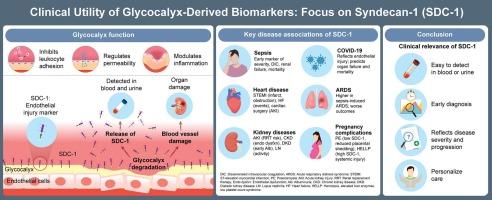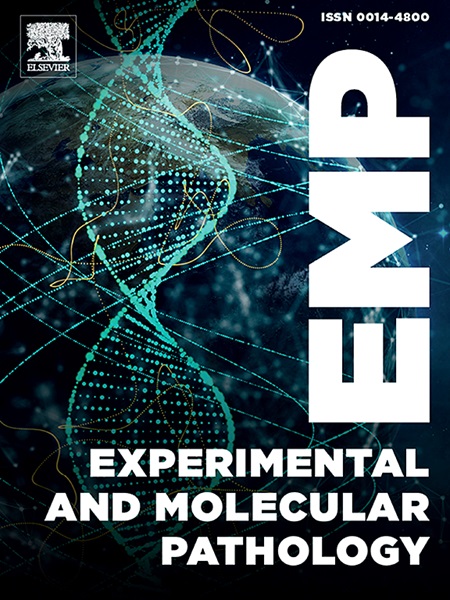糖萼脱落作为危重疾病的临床生物标志物
IF 3.7
4区 医学
Q2 PATHOLOGY
引用次数: 0
摘要
内皮糖萼是一种富含碳水化合物的血管内皮层,通过调节血管通透性、白细胞粘附和炎症信号传导,在维持血管稳态中起关键作用。它的降解与各种疾病的内皮功能障碍和器官损伤有关。来自糖萼成分的生物标志物,特别是Syndecan-1 (SDC-1)和硫酸肝素(HS),可以在血液和尿液中检测到,为血管损伤提供了一个潜在的窗口。在这篇叙述性综述中,我们探讨了糖萼衍生的生物标志物的临床潜力,重点是SDC-1,在广泛的疾病中,包括败血症、冠状病毒病、急性呼吸窘迫综合征、肾脏疾病、心血管疾病、自身免疫性疾病、癌症、创伤和妊娠相关并发症。我们强调了糖萼降解的病理生理机制,评估了SDC-1的诊断和预后效用,并总结了保持糖萼完整性的新兴治疗策略。考虑到糖萼衍生的生物标志物与疾病严重程度和预后的强烈关联,它们可能有助于早期诊断、改善风险分层和个性化治疗,从而在不同的医疗条件下支持更明智的临床决策。本文章由计算机程序翻译,如有差异,请以英文原文为准。

Glycocalyx shedding as a clinical biomarker in critical illness
The endothelial glycocalyx, a carbohydrate-rich layer lining the vascular endothelium, plays a critical role in maintaining vascular homeostasis by regulating permeability, leukocyte adhesion, and inflammatory signaling. Its degradation has been implicated in endothelial dysfunction and organ damage in various diseases. Biomarkers derived from glycocalyx components, particularly Syndecan-1 (SDC-1) and heparan sulfate (HS), can be detected in blood and urine, providing a potential window into vascular injury. In this narrative review, we explore the clinical potential of glycocalyx-derived biomarkers, with a focus on SDC-1, in a broad spectrum of conditions, including sepsis, coronavirus disease, acute respiratory distress syndrome, kidney diseases, cardiovascular disorders, autoimmune diseases, cancer, trauma, and pregnancy-related complications. We highlight the pathophysiological mechanisms of glycocalyx degradation, assess the diagnostic and prognostic utility of SDC-1, and summarize emerging therapeutic strategies to preserve glycocalyx integrity. Given their strong association with disease severity and outcomes, glycocalyx-derived biomarkers may enable earlier diagnosis, improved risk stratification, and personalized treatment, supporting more informed clinical decision-making across diverse medical conditions.
求助全文
通过发布文献求助,成功后即可免费获取论文全文。
去求助
来源期刊
CiteScore
8.90
自引率
0.00%
发文量
78
审稿时长
11.5 weeks
期刊介绍:
Under new editorial leadership, Experimental and Molecular Pathology presents original articles on disease processes in relation to structural and biochemical alterations in mammalian tissues and fluids and on the application of newer techniques of molecular biology to problems of pathology in humans and other animals. The journal also publishes selected interpretive synthesis reviews by bench level investigators working at the "cutting edge" of contemporary research in pathology. In addition, special thematic issues present original research reports that unravel some of Nature''s most jealously guarded secrets on the pathologic basis of disease.
Research Areas include: Stem cells; Neoangiogenesis; Molecular diagnostics; Polymerase chain reaction; In situ hybridization; DNA sequencing; Cell receptors; Carcinogenesis; Pathobiology of neoplasia; Complex infectious diseases; Transplantation; Cytokines; Flow cytomeric analysis; Inflammation; Cellular injury; Immunology and hypersensitivity; Athersclerosis.

 求助内容:
求助内容: 应助结果提醒方式:
应助结果提醒方式:


